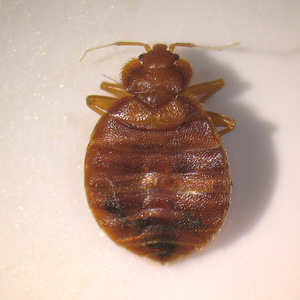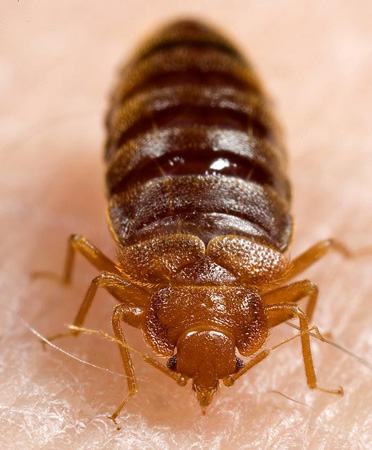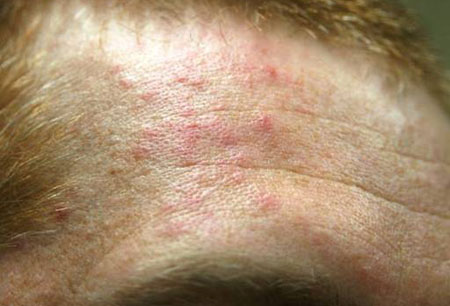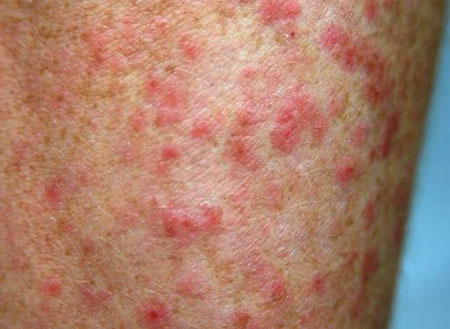History and exam
Key diagnostic factors
common
presence of risk factors
bed bug sighting
Patients may report witnessing small brown bugs in sites common for bed bugs in their environment (e.g., crevices of mattresses, bed bases, and bed headboards and behind skirting boards). Ink dot-like spots on headboards and mattresses or blood stains on sheets are clues to bed bug infestations in the bedroom.[25] When asked, however, patients will often deny knowledge of any recent insect bite.[Figure caption and citation for the preceding image starts]: Cimex lectularius, collected in a hotel in urban GeorgiaCourtesy of the CDC [Citation ends]. [Figure caption and citation for the preceding image starts]: Cimex lectulariusCourtesy of the CDC [Citation ends].
[Figure caption and citation for the preceding image starts]: Cimex lectulariusCourtesy of the CDC [Citation ends].
irregular curved or linear erythematous papules
Most skin lesions are erythematous papules, 1-5 mm in size, arranged in an irregular curved or linear pattern on skin exposed during sleep (e.g., face, neck, arms, legs, and shoulders).[7] A small central haemorrhagic punctum may be seen.[3][12]
Lesions may occur hours to days after being bitten.[7] The interval between bite and reaction may decrease as the host is repeatedly exposed.[8][Figure caption and citation for the preceding image starts]: Bed bug bites showing numerous erythematous papulesFrom the contributors' personal teaching collection (Julian J. Trevino, David R. Carr, Suzanne L. Dundon); used with permission [Citation ends]. [Figure caption and citation for the preceding image starts]: Linear distribution of papulesFrom the contributors' personal teaching collection (Julian J. Trevino, David R. Carr, Suzanne L. Dundon); used with permission [Citation ends].
[Figure caption and citation for the preceding image starts]: Linear distribution of papulesFrom the contributors' personal teaching collection (Julian J. Trevino, David R. Carr, Suzanne L. Dundon); used with permission [Citation ends].
new skin lesions noted in the morning
pruritus
Patients often describe an intense pruritus.
Other diagnostic factors
uncommon
pain or burning
Rarely, patients may describe pain or burning of the lesions.
papular or diffuse urticaria
Less commonly, lesions may present as a papular or diffuse urticaria.[3]
widespread urticaria/wheezing/stridor/hypotension
Rarely, patients may present with anaphylaxis.[3]
specks of blood or faeces on sheets
Patients may report specks of blood or faeces on their bed sheets or mattress.
Risk factors
weak
high-turnover environment
recent travel
Use of this content is subject to our disclaimer